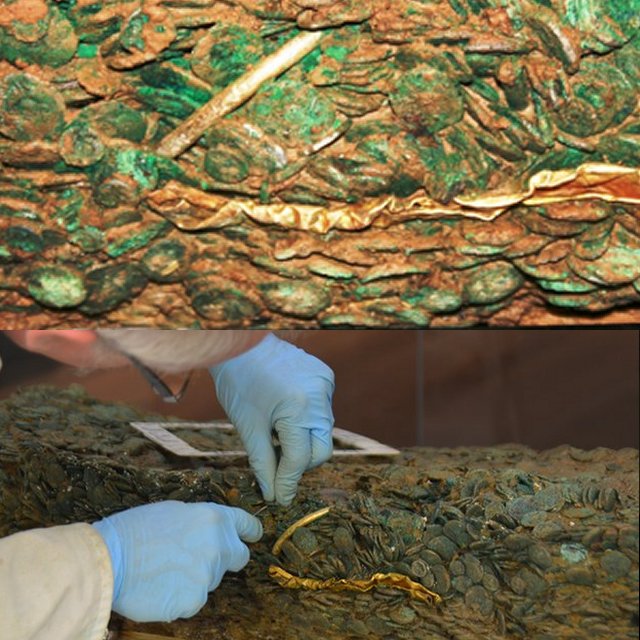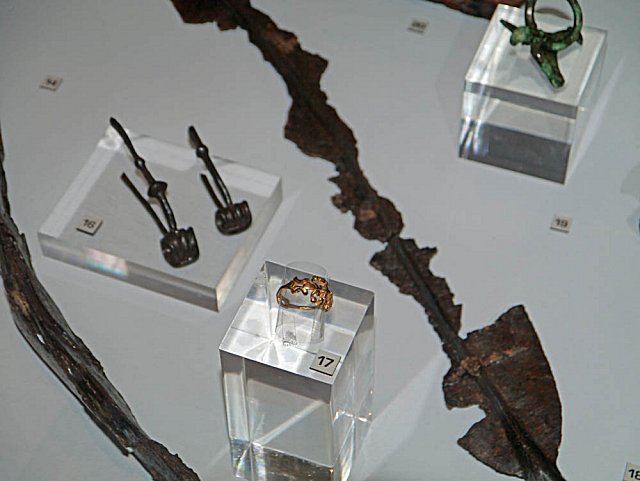MessageToEagle.com – Discovered in Jersey in 2012 Le Catillon II is the World’s largest Celtic coin hoard and is made up of approximately 70,000 silver alloy coins plus gold and silver jewellery.
According to website Jersey Heritage the hoard is the centrepiece of a major exhibition which looks at the Channel Islands as part of the Celtic and Roman worlds two thousand years ago when they were at the edge of the Empire.
These coins were made about 2,000 years ago – when Julius Caesar and his Roman legions were conquering and the Channel Islands were changing from a Celtic way of life to a Roman style of living.
Three hundred years before the birth of Christ, the Channel Islands were firmly in the Celtic world. Today we know these areas as Brittany and Normandy and the larger islands are Jersey, Guernsey, Alderney and Sark. The Romans referred to this region as Armorica and the people as Gauls.

By the time the Romans arrived the region was settled by a number of different tribes whom we know by the names the Romans gave them. The closest tribes to the Channel Islands were the Unelli to the east and the Coriosolites to the south.
In the middle of the 1st century BC Julius Caesar was leading his Roman legions over the Alps against the peoples of Gaul (modern day France). By 56 BC three Roman legions were attacking the people of Armorica.
By 52 BC the Roman conquest was complete and all of Armorica, including the Channel Islands, was part of the Roman World.

We believe that the coin hoards date from this time. If we are right, then they represent a shift in the history of the Channel Islands as they represent for the struggle between an independent Celtic world or a subservient Roman future.
When the Channel Islands became part of the Roman Empire life initially would have carried on much as it had. Gradually the islanders traditional Celtic/Gaulish way of life changed as more Roman ways were introduced and adopted.
We generally refer to this new culture as Gallo-Roman. The islands were no longer on the edge of things, they were part of a large unified empire and trading network.
Guernsey provides more evidence of this process of Romanisation because St Peter Port developed around its natural deep water harbour into a small town and trading centre, welcoming ships passing through carrying wines and exotic goods from the Mediterranean and grain and furs from the Britain and further north.
Jersey remained more of a Celtic backwater because it lacked decent harbours although more evidence is coming to light.
After nearly 300 years of a unified Roman empire, attacks from the north saw the first signs of a break up which would lead to regional leaders assuming more power, a greater emphasis on maritime power, and people once again burying their wealth.”
MessageToEagle.com






